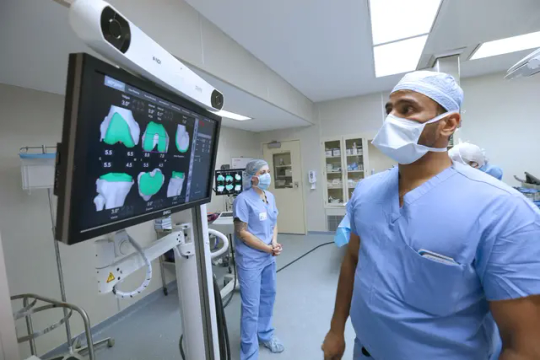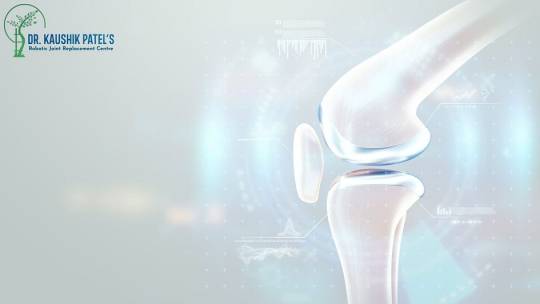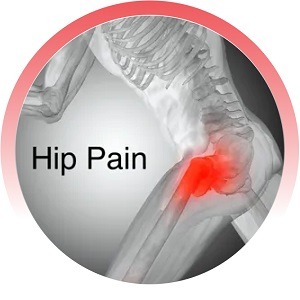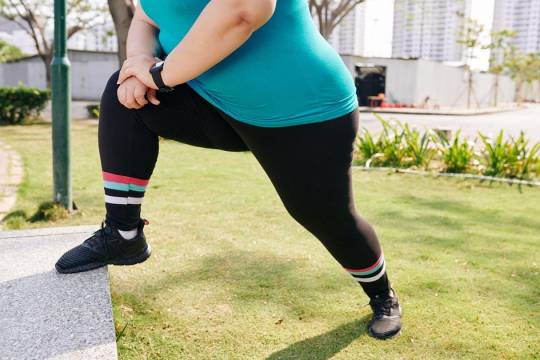#replacement surgeon
Text
Revitalizing Your Mobility: Finding the Right Joint Replacement Surgeon in Kolkata
Dealing with joint pain and considering a joint replacement can be a daunting journey. Understanding the common concerns and preparing efficiently can make a significant difference in the outcome. Typically, joint replacement surgeries like hip and knee replacements are sought after due to conditions like arthritis, trauma, or wear and tear of the joint. Before opting for surgery, it's crucial to try conservative treatments such as anti-inflammatory medications, physical therapy, or lifestyle modifications.
Preparation for surgery involves a detailed medical review, including any existing health conditions like diabetes, asthma, or heart problems. It's important to inform your surgeon about any medications or allergies you have. Lifestyle modifications such as quitting smoking, following a nutritious diet, and exercising can be beneficial for a better surgical outcome. Moreover, planning for post-surgery recovery at home is essential. This might include arranging for assistance, modifying your living space for easier mobility, and ensuring a safe environment to prevent falls.
Understanding the surgical procedure is key. The surgery involves removing damaged parts of the joint and replacing them with prosthetic components. Nowadays, advancements like robotic-assisted joint replacements are available, offering more precision. Post-surgery, patients usually undergo a recovery period in the hospital followed by rehabilitation. The recovery process includes managing pain, preventing blood clots, and participating in physical therapy to regain mobility and strength.
Selecting a surgeon with extensive experience in joint replacement surgery is essential for ensuring a positive outcome, especially in Kolkata. By choosing a proficient joint replacement surgeon in Kolkata, patients can significantly increase their chances of a successful operation and a smoother, quicker recovery. Such a surgery, when performed under the right care and preparation, has the potential to greatly improve one's quality of life. It can alleviate pain and enhance mobility, thereby allowing patients to resume their daily activities with greater ease. Therefore, for those contemplating this surgical option in Kolkata, it is highly recommended to engage with a well-regarded joint replacement surgeon to discuss individual needs and expectations, ensuring a tailored approach to their treatment and care.

0 notes
Text
Comparison of Robotic Knee Replacement Outcomes to Traditional Knee Replacement Outcomes

Knee replacement surgery is a common procedure used to treat severe knee pain and limited mobility due to arthritis or other degenerative conditions. Traditionally, knee replacement surgery has been performed using manual techniques, but in recent years, robotic-assisted surgery for robotic knee replacement in Surat has become increasingly popular.
Let’s understand and compare the outcomes of robotic knee replacement surgery to traditional knee replacement surgery.
Robotic knee replacement surgery
Robotic knee replacement surgery uses a computer-guided robotic arm to assist the surgeon in performing the procedure. Dr Kaushik Patel, one of the best robotic knee replacement surgeons in Surat, shares his experience of performing knee replacement surgery using the robotic arm. He says: “The arm is controlled by the surgeon which allows the surgeon for more precise placement of the knee implant.” The robotic arm uses real-time imaging to guide the surgeon, which can help reduce the risk of error and improve the accuracy of implant placement.
Advantages of robotic knee replacement surgery
● More precise implant placement: The robotic arm used in robotic knee replacement surgery allows for more precise implant placement, which can lead to a better fit and a more natural feel.
● Reduced risk of complications: The real-time imaging used in robotic knee replacement surgery can help reduce the risk of complications such as malalignment and implant loosening.
● Improved recovery: Robotic knee replacement surgery is less invasive than traditional knee replacement surgery, which can lead to a faster recovery time and less pain after the procedure.
● Better long-term outcomes: Studies have shown that patients who undergo robotic knee replacement surgery have better long-term outcomes, including improved function and a lower risk of revision surgery.
Limitations of robotic knee replacement surgery
● Cost: Robotic knee replacement surgery is often more expensive than traditional knee replacement surgery due to the use of advanced technology.
● Limited availability: Robotic knee replacement surgery is not yet widely available, and not all orthopaedic surgeons are trained in this technique.
● Lack of long-term data: Although studies have shown promising results for robotic knee replacement surgery, long-term data is limited, and more research is needed to determine the long-term outcomes of this procedure.
Traditional knee replacement surgery
Traditional knee replacement surgery is a manual technique that involves the removal of damaged cartilage and bone from the knee joint and the placement of an artificial knee implant.
The best joint replacement surgeons in Surat state the following as advantages of traditional knee replacement surgery:
● Established technique: Traditional knee replacement surgery has been performed for many years and is a well-established technique.
● Lower cost: Traditional knee replacement surgery is often less expensive than robotic knee replacement surgery due to the lack of advanced technology.
● Availability: Traditional knee replacement surgery is widely available and is performed by most orthopaedic surgeons.
According to the best knee replacement surgeons in Surat, some of the limitations of traditional knee replacement surgery are:
● Less precise implant placement: Traditional knee replacement surgery relies on the surgeon’s experience and skill to accurately place the knee implant, which can lead to errors and less precise placement.
● Higher risk of complications: Traditional knee replacement surgery has a higher risk of complications, such as malalignment and implant loosening, which can lead to revision surgery.
● Longer recovery time: Traditional knee replacement surgery is a more invasive procedure than robotic knee replacement surgery, which can lead to a longer recovery time and more pain after the procedure.
Frequently asked questions
Does robotic knee replacement heal faster?
Robotic knee replacement surgery is less invasive than traditional knee replacement surgery, which can lead to a faster recovery time and less pain after the procedure.
Is robotic knee surgery better than traditional?
Robotic knee replacement surgery offers several advantages over traditional knee replacement surgery, including more precise implant placement, reduced risk of complications, and better long-term outcomes. However, it is more expensive and not yet widely available.
What type of knee replacement is most successful?
Both robotic knee replacement surgery and traditional knee replacement surgery can be successful, and the choice between the two depends on the individual patient’s needs and preferences. Factors such as the severity of the knee condition, the patient’s age and health, and the surgeon’s expertise may also play a role in determining the most appropriate type of knee replacement surgery.
Which implant is best for knee replacement in India?
The choice of knee implant for knee replacement surgery in Surat depends on several factors, including the patient’s age, activity level, and overall health. There are many different types of knee implants available, including metal-on-plastic, ceramic-on-ceramic, and metal-on-metal implants. Each type of implant has its own advantages and disadvantages, and the best choice of implant depends on the patient’s individual needs and preferences. It is important to discuss the options with your orthopedic surgeon to determine the best implant for your specific case.
#dr. kaushik patel#joint replacement surgeon#surgeon#surat#knee replacement#replacement surgeon#orthopaedic
0 notes
Text
Joint replacement surgery in Delhi - Dr. Darsh Goyal
Dr. Darsh Goyal is one of the most renowned & pioneer knee joint replacement surgeon in Delhi, India, with 20 years of active orthopedic surgery experience.
Knee replacement surgery
Knee Replacement Surgery is an elective surgical procedure required for people who have significant pain in their knees as a result of arthritis of the knee. The knee joint, the most complex joint in the body, begins to erode due to arthritis. Osteoarthritis, the most common type of arthritis affecting the knees, begins as people enter middle age.
As seen in the diagram below, the knee joint can become severely damaged as the cartilage slowly wears away and the person continues to walk and bear weight on the joint.
Total knee replacement surgery involves a surgical operation in which a knee joint made out of special metal materials and inert plastic is inserted into the damaged parts of the knee, similar to how a tooth is capped. These components are highly specialized and designed to work in perfect synchrony with your knee.
0 notes
Text
I like to remember how tfp Shockwave used to be a surgeon and I like to think that theoretically he can act as a medic
Theoretically
Is it a good idea? No.
But is it funny to imagine mecha with injuries going to him instead of a (relative to him) regular medic for a variety of reasons and he's just. Terrifying beyond belief.
#maccadam#transformers#same with hazard except Shockwave having been a surgeon is canon#though I'm half sure being a surgeon was an excuse for Shockers to be allowed to conduct vivisections and experiments#like#i get the vibes of surgeon in the way of him preferring to cut off a leg and replace it rather than actually repair the gunshot wound#at least Knockout merely offered Starscream a new type of arm when hers fell off. i don't think Shockwave would ask first
106 notes
·
View notes
Text
musing in the tags about the view two years out from my hysterectomy and the shifting nature of neuropathy. i asked my PT for recommendations/resources pertaining to pain science and that's been a very helpful lenses to have. i'm still not back to normal, will never be unmarked by this experience or return to my pre-op self, but my baseline has been gradually increasing over the last few months, and it feels good to look back on the last two years and say "i have no idea how i managed to function while living with that, but i did!"
#meatsuit renno#chronic blogging#ctxt#at first post-hysto pain was a deep burning ache#and eventually that lessened on my left side and settled in for the long haul on the right#after a couple weeks it had started to feel like a small carnivorous creature scrabbling and gnawing at the inside of my abdomen#nestled into the hollow of my pelvis and reaching up with its raking claws#about 6 months in and the creature still chewed occasionally but had shrunk to the size of a tennis ball under my right incision site#it clamped its jaws down and went to sleep and i perpetually felt like someone had pinched a fold of my insides with a large binder clip#this constant awful twisting tug every time i moved that kept me from straightening up or breathing fully#this is about a year into recovery and my original surgeon has blown off my requests for follow-up treatment three times now#i carried on as best i could. fatigue and brainfog getting worse & worse as the pain wore on unrelentingly#about a year and a half into recovery it worsened again. searing lancing pain like i'd been impaled on a piece of white hot rebar#couldn't hardly move. couldn't think straight. couldn't sleep#finally checked myself into urgent care & then the ER just to try to get someone anyone to take me seriously and help me#finally got a referral to a new surgeon who immediately pinned it as extreme neuropathy#started gabapentin end of december last year and the relief was immediately#i never thought i would welcome the gritted teeth vice grip of my little feral pain creature#but when i felt the molten spike slide out to be replaced once more by its worrying jaws#the intermittent spark and fizzle of that pinching squirming pain was a dramatic improvement#then i started PT in march and slowly so slowly the creature's hungry grip is loosening#it still clamps down occasionally. maybe once every week or two i'll have a day when i just accept#that there will be a horrible little creature chewing on my right side from the inside#but nowadays with the gabapentin doing as much as it can and an exercise routine i must stick to religiously to supplement PT#the pain is more of a little pearl of dark matter shifting around under my skin#it's incredibly dense. the heart of a black hole of disabling agony. all that white hot fury condensed into a slick heavy marble#as i recover some of my strength and energy i can feel my body coating it in nacreous layers to minimize its influence#my hysterectomy was 2 years and 4 days ago today and i feel like i can finally finally say i'm beginning to truly heal#i suspect i'll always carry this pearl in my side like shrapnel. product of damaged nerve tissue that went untreated for far too long#i wish my original surgeon had been more competent more attentive less lazy & indifferent to my pain. but i still don't have any regrets.
13 notes
·
View notes
Text
NOW THAT I MANAGED TO WRITE SOMETHING AND CONTRIBUTED TO THE RIO SUPREMACY, am going to go back to sleep <3
#good night everyone <3#Appointment with the surgeon tomorrow to replace my bandages#CANT WAIT#side effects of anaesthesia still hitting hard but am feeling better now#Good enough to walk around and write a bit#private
17 notes
·
View notes
Text

Dr Vishwadeep Sharma is Director of Arthroscopy & Sports Injuries, Shoulder & Knee Surgeon Fortis Hospital Vasant Kunj and he is associated with hospital since 2013. He specializes in Shoulder, Knee & Sports Injuries. With more than 15 years of dedicated experience in Arthroscopy of the Shoulder & Knee. Dr Sharma has keen interest in Sports injuries with many years of experience in treating young athletes and players involved in various professional Sports. He is one of the best Orthopedic surgeon in Delhi.
#Shoulder Dislocation treatment in Delhi#Rotator Cuff Tear Treatment in Delhi#Shoulder Fracture treatment in Delhi#Shoulder Replacement Surgery in Delhi#Reverse Shoulder Replacement surgery Delhi#Frozen Shoulder Treatment in Delhi#Knee Replacement surgery in Delhi#Knee Arthroscopy surgery in Delhi#ACL Reconstruction Surgery in Delhi#PCL Reconstruction Surgery in Delhi#Orthopaedic surgeon in Delhi#Re-doing Failed Shoulder Surgery in Delhi#Mensicus repair Surgery in Delhi#Injury Specialist in Delhi#Cricket related injuries
2 notes
·
View notes
Text
Get effective hip pain treatment at our hip replacement hospital. Expert surgeons offer hip replacement and advanced hip surgery options for lasting relief.

2 notes
·
View notes
Text
that epic moment when your ehlers danlos is so bad that the dental surgeon asks you if you have it after glancing at your x-rays once
#my jaw is weak. that’s the diagnosis#I love dental surgeons and orthodontists they’re always so funny#I’ve had many many teeth removed already#so I’m chill about it#wisdom teeth is just one more set#had my first dental surgery when I was 8 :)#the weirder bit is he wants to replace my jaw in 5 years#or. best case scenario. put some screws in it#he hates my teeth grinding swag
5 notes
·
View notes
Text
the whole Thing of selkiebugs is that it's meant to look, on the surface, to be about explorers doing funny animal things with a slight hint of darkness because of the potential mind control part. so that nobody notices the wizards unstitching the very fabric of the concept in the background
2 notes
·
View notes
Text
youtube
#Best Ortho Hospital in Madurai#Ortho Hospital in Madurai#Ortho Hospital#Knee Replacement Hospital in Madurai#Best Knee Replacement Surgery in Madurai#Hip Replacement Surgery in Madurai#Best Ortho Surgeon in Madurai#Ortho Clinic in Madurai#Youtube
2 notes
·
View notes
Text
The Effects of Obesity on Knee Replacement Surgery and its Recovery- Know from the Expert Knee Replacement Surgeon

Obesity is a growing concern around the world. According to the World Health Organization (WHO), worldwide obesity has nearly tripled since 1975. In 2016, more than 1.9 billion adults were overweight, with over 650 million of those being classified as obese. This increase in obesity has led to a rise in the number of knee replacement surgeries performed annually. Some of the knee replacement surgeon in Surat concur that obesity can have a significant impact on knee replacement surgery and recovery.
Knee replacement surgery is a common procedure used to relieve pain and improve mobility in individuals with damaged or worn knee joints. During the procedure, the damaged joint is replaced with an artificial joint made of metal, plastic, or a combination of the two. Recovery from knee replacement surgery typically involves physical therapy and rehabilitation to help regain strength and mobility in the knee.
What are the effects of obesity on knee replacement surgery?
Knee replacement surgery might be significantly impacted by obesity. The following are some possible issues and adverse effects as explained by our knee specialist in Surat at Dr. Kaushik Patel’s Robotic Joint Replacement Centre, that could result from obesity:
Surgery-related complications: Patients who are obese and having knee replacement surgery may be more susceptible to complications such deep vein thrombosis (DVT), wound infections, and delayed wound healing. The extra weight may make it more difficult to get access during surgery and raise the level of difficulty.
Increased joint stress: Being overweight puts more strain on the knee joint, which can speed up the development of osteoarthritis, the main condition that leads to knee replacement surgery. Obesity can continue to put stress on the new joint even after surgery, which could result in implant loosening, wear, or failure.
Limited functionality and mobility: Obesity can reduce knee joint range of motion and impede mobility. The outcome of the procedure and the recovery period could be impacted by this restriction. It may also make it harder to attain the best results and regain full functionality.
Increased anaesthesia risks: Obese people are more likely to experience anaesthesia issues because of things like weakened breathing capacity, sleep apnea, and decreased drug tolerance. To ensure the safety of obese patients under anaesthesia during the treatment, rigorous monitoring and specialised procedures are needed.
Slower rehabilitation and recovery: Obesity can make it more difficult to recover from knee replacement surgery. Excess weight can hinder the effectiveness of physical treatment, put additional strain on the recovering joint, and make it more challenging to restore strength and mobility.
Obese people are more likely to experience complications following surgery, including infections, blood clots, pulmonary emboli, cardiovascular issues, and slow wound healing. These issues may have a substantial impact on the healing process and final results of knee replacement surgery.
Can you fully recover from knee surgery?
Yes, it is possible to fully recover from knee replacement surgery with proper care and rehabilitation and by choosing the best knee joint surgeon in Surat. Physical therapy is an important part of the recovery process, and it can help improve strength, flexibility, and mobility in the knee joint. It is important to follow the rehabilitation program prescribed by your surgeon or physical therapist and to avoid activities that may put excessive stress on the knee joint.
However, recovery time can vary depending on a range of factors, including the extent of the surgery, the patient’s overall health, and the presence of any complications. In general, most people are able to resume normal activities within six weeks to three months after knee replacement surgery.
Can knee surgery fail?
Yes, knee replacement surgery can fail for a range of reasons, including infection, implant loosening, and wear and tear of the implant. In some cases, revision surgery may be necessary to replace the failed implant. People who are obese or have other health problems may be at a higher risk of implant failure. To minimize the risk of implant failure, it is important to follow the post-operative care instructions provided by your surgeon.
What are the side effects of knee surgery?
Like any surgical procedure, knee replacement surgery carries some risks and side effects. So according to our experts at Dr. Kaushik Patel’s Robotic Joint Replacement Centre, it is very important to choose your orthopaedic surgeon in Surat.
These can include:
● Pain and swelling: It is normal to experience some pain and swelling after knee surgery, and pain medication may be prescribed to manage these symptoms.
● Infection: Infection is a potential complication of knee surgery, and it can have serious long-term consequences. Signs of infection include fever, redness, and swelling around the incision site.
● Blood clots: Blood clots are another potential complication of knee surgery, and they can lead to serious health problems, such as a pulmonary embolism or stroke. Signs of a blood clot include swelling, redness, and warmth in the leg.
● Nerve damage: Nerve damage is a potential complication of knee surgery, and it can cause numbness, tingling, or weakness in the leg.
● Implant failure: In rare cases, knee replacement surgery can result in implant failure, which may require revision surgery to replace the implant.
Conclusion
It’s important to note that while obesity can increase the risks and complications associated with knee replacement surgery, it does not necessarily exclude an individual from undergoing the procedure. Each case should be evaluated individually, and the risks and benefits should be carefully assessed by the patient and their healthcare team. Additionally, weight management and adopting a healthier lifestyle before and after surgery can help mitigate some of these risks and improve the long-term success of the procedure.
Individuals who are obese are at a higher risk of complications during and after surgery and may have a slower recovery time compared to non-obese patients. However, taking steps to lose weight before surgery, maintaining a healthy weight after surgery, and working with a physical therapist and rehabilitation team can help reduce the impact of obesity on knee replacement surgery and recovery.
If you are considering knee replacement surgery in Surat and are concerned about your weight, speak to one of the best orthopaedic surgeon in Surat at Dr. Kaushik Patel’s Robotic Joint Replacement Centre, Surat for advice on how to best prepare for surgery and optimize your recovery outcomes.
0 notes
Text

the inventor
#hey girl. man covered in blood#he is covered in blood so many times over the course of this story it’s gonna be so fun#inventor#<— replace once i have a name for him#his ass is NOT a surgeon!!!#sketch#digital art#steampunk#oc#original story#blood tw#arcadiiian art
9 notes
·
View notes
Photo

With the experience of more than 11 years treating adolescent, adult, and elderly patients, I guarantee you the best solutions to your problems. To get cure from Knee Replacement Surgery Doctors In Bangalore connect with us today or call us on +91-6366700736
12 notes
·
View notes
Text
Best Knee Replacement Surgeon in Pune | Knee Replacement Surgery Cost in Pune
Knee replacement, also called knee arthroplasty or total knee replacement, is a surgical procedure to resurface a knee damaged by arthritis. Metal and plastic parts are used to cap the ends of the bones that form the knee joint, along with the kneecap. This surgery may be considered for someone who has severe arthritis or a severe knee injury.
Various types of arthritis may affect the knee joint. Osteoarthritis, a degenerative joint disease that affects mostly middle-aged and older adults, may cause the breakdown of joint cartilage and adjacent bone in the knees. Rheumatoid arthritis, which causes inflammation of the synovial membrane and results in excessive synovial fluid, can lead to pain and stiffness. Traumatic arthritis, arthritis due to injury, may cause damage to the cartilage of the knee.

Anatomy of the knee
Joints are the areas where 2 or more bones meet. Most joints are mobile, allowing the bones to move. Basically, the knee is 2 long leg bones held together by muscles, ligaments, and tendons. Each bone end is covered with a layer of cartilage that absorbs shock and protects the knee.
There are 2 groups of muscles involved in the knee, including the quadriceps muscles (located on the front of the thighs), which straighten the legs, and the hamstring muscles (located on the back of the thighs), which bend the leg at the knee.
Tendons are tough cords of connective tissue that connect muscles to bones. Ligaments are elastic bands of tissue that connect bone to bone. Some ligaments of the knee provide stability and protection of the joints, while other ligaments limit forward and backward movement of the tibia (shin bone).
2 notes
·
View notes
Link

#Best Joint Replacement Surgeon in Delhi Ncr#joint replacement surgery#Best Joint Replacement Surgeon In Delhi#joint replacement#joint#Hip Replacement Surgeon#hipreplacementsurgeon#Hip Replacement Surgeon in Ahmedabad#hip replacement surgeon in indore#knee replacement surgery#knee replacement surgeon in delhi#Knee Replacement Surgeon#knee replacement surgeon in mumbai#hip
4 notes
·
View notes